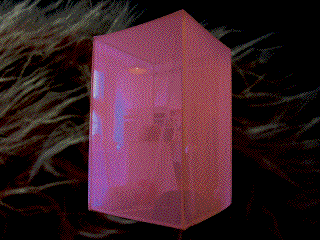
I developed the ideas from the second lab into a multi-media installation: Room of all Colors and Sounds.
Project Discription: https://itp.nyu.edu/projects/projectinfo.php?project_id=3213
The project was accomplished by building 3 capacitive sensors described in the section 2 lab. The max patch and arduino code were modified in order to accommodate for more sensors. A building a simple DMX shield enabled me to control DMX lights in addition to sound and video. Looking at schematics of a different DMX shield enabled me to know that the illegibly-label resistor is a 100 Ohm resistor. The code for the arduino was a little tricky as well as I had to figure out how to communicate with pins directly because that is a lot faster and the capacitive sensor depend on calculations that happen in extremely short time intervals. The code is below:
More… »
Posted by admin at 5:58 pm on May 5th, 2010.
Categories: P-Comp.
what appears to be an infra red camera (if you enlarge the image you can see the ring of infra red sensors):
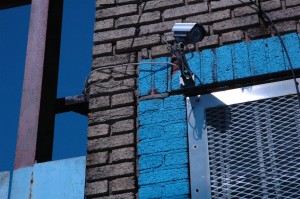
touch buttons on dryer – pressure sensors?
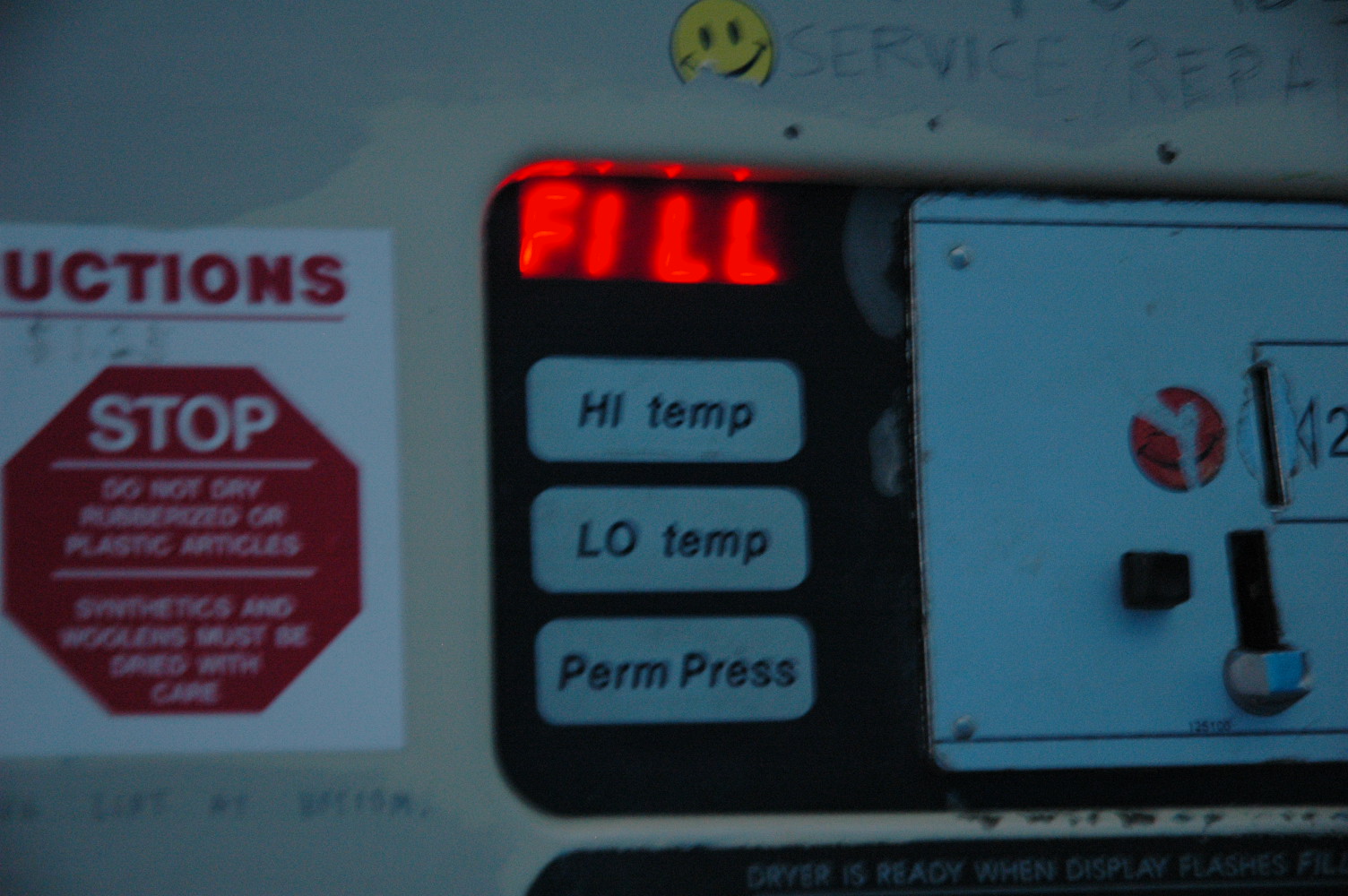
atm: buttons and magnetic strip sensor:
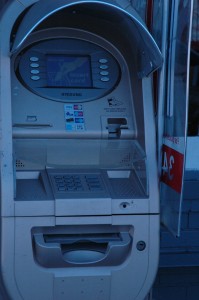
Posted by admin at 5:32 pm on May 5th, 2010.
Categories: P-Comp.
This is a touch interface for controlling sound and video.
A capacitive proximity sensor made out of tinfoil is placed underneath a fuzzy fabric and attached to a max patch. In its dormant state the patch creates a quite low tone. As one reaches out to touch the fabric the frequency of the sound changes and video effects intensify. The change in frequency and intensity of video effects varies with the distance of one’s hand from the actual sensor. Thus by rubbing the fabric the user becomes conscious of his/her control of the sound and video and is able to creatively interact with the fabric.
Capacitive Sensor: two wires from pin 8 and 9 with a 1M resistor between them; another wire connected to pin 9 running to the strip of aluminum foil. Code and sensor design were acquired from the following arduino forum thread: http://www.arduino.cc/cgi-bin/yabb2/YaBB.pl?num=1171076259
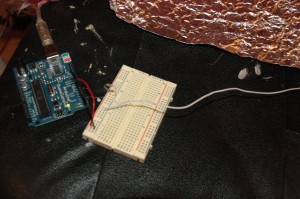
the fabric hiding the sensor:
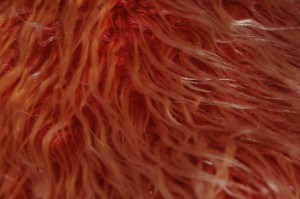
max patch:
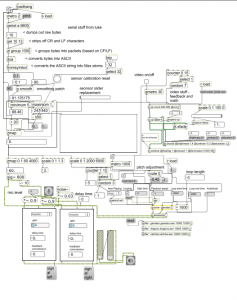
Posted by admin at 12:38 am on April 19th, 2010.
Categories: P-Comp.
this is a simple device that will successively light a series of leds depending on how dark/light it is in the room
plenty of light, no leds are on:
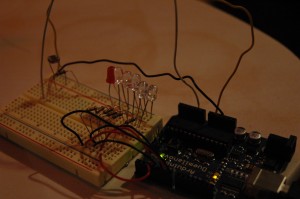
some light is blocked, 2 leds are light up:
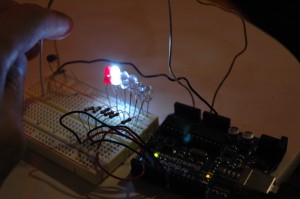
almost all light is blocked and 5 out of 6 leds light up:
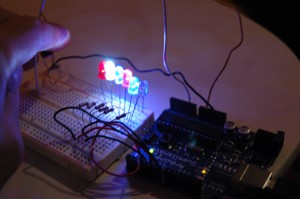
possible applications: illumination of light switches – as darkness sets it, the light switches are illuminated more and more making them easier to find and switch on.
further development ideas: incorporating some sort of calibration mechanism to accommodate a greater variety of light settings.
Posted by admin at 12:16 am on April 19th, 2010.
Categories: P-Comp.
Technology: MetroCard Vending Machine.
Assumptions: A machine whose purpose it is to enable the user to purchase the necessary type of MetroCard.
Observations: Most people seem to know what to do and do it fast. Some people take more time reading through the different menus and deciding between the different options. It seems that every person that interacts with the vending machine is able to procure a MetroCard. It is hard to say if it is exactly the MetroCard they want/need. The fact that there are several steps to go through before getting the needed card makes the interaction slower then it could be but it is still fairly fast if one knows what they are doing.
The technology has good conceptual design, good visibility and good user feedback.
Posted by admin at 11:38 pm on January 26th, 2010.
Categories: P-Comp.








